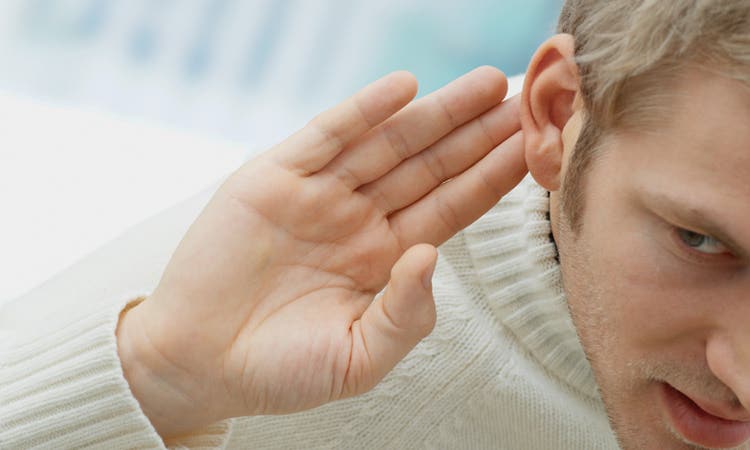Scientists discover natural repair process that fixes damaged hearing
UVA researchers have made a groundbreaking discovery regarding the regenerative abilities of our auditory hair cells.

[July 12, 2023: Staff Writer, The Brighter Side of News]
Cognitive training can help restore effective auditory processing. (CREDIT: Creative Commons)
At the University of Virginia School of Medicine, a team of researchers has made a groundbreaking discovery regarding the regenerative abilities of our auditory hair cells. This new revelation, bringing us one step closer to understanding and potentially preventing hearing loss, offers a wealth of promising avenues for future research and development.
The auditory hair cells, microscopic structures nestled within the inner ear, are integral to our auditory and vestibular system, responsible not only for our ability to discern the rustle of leaves or the hum of city life but also for maintaining our equilibrium.
The nomenclature "hair cells" derives from the thin, hair-like protrusions covering the cells that function as mechanical antennas, deciphering the physics of sound waves into information our brain can process.
Traditional wisdom, taught in classrooms across the globe, held a somber prognosis for these delicate cells – once damaged or destroyed, they were considered irreparable. However, this latest study conducted at UVA Health presents a paradigm shift, offering substantial evidence that these cells are capable of self-repair when subjected to loud noises or other forms of stress.
Related News
Dr. Jung-Bum Shin, a prominent researcher from UVA’s Department of Neuroscience, led the team behind this discovery. He stated, “For many years, auditory research has placed considerable emphasis on the regeneration of sensory hair cells. Although these efforts continue, it is equally important to enhance our comprehension of the intrinsic mechanisms that govern the repair and maintenance of these cells."
Dr. Shin emphasizes the significance of understanding these inherent repair processes, suggesting that they could reveal strategies to fortify them effectively. Future treatment modalities might harness drugs that stimulate these intrinsic repair programs. "In essence, when replacement of hair cells proves challenging, the focus shifts towards repairing them instead. This dual strategy of regeneration and repair holds strong potential in advancing treatments for hearing loss and associated conditions,” he elaborates.
The auditory hair cells embody a paradox – their delicate nature, necessary to perceive even the faintest of sounds, must also withstand the continuous mechanical stress associated with sound detection. Prolonged exposure to loud noise, for example, has a variety of damaging effects on hair cells, notably on the cores of the hair-like structures themselves, known as stereocilia.
The University of Virginia School of Medicine's Jung-Bum Shin, PhD, has discovered how hair cells that let us hear can naturally repair themselves. (CREDIT: Dan Addison | UVA Communications)
Dr. Shin's recent research provides an enlightening view of the repair process in these stereocilia. The team discovered that a protein named XIRP2 is crucial in this cellular renovation. XIRP2 identifies damage to the stereocilia cores, comprised of a protein substance known as actin, migrates to the damage site, and initiates repairs by filling in new actin.
Speaking about this exciting development, Shin stated, “We are especially excited to have identified a novel mechanism by which XIRP2 can sense damage-associated distortions of the actin backbone.” This discovery isn’t just a significant step forward for hair cell research but holds relevance for the broader cell biology discipline.
The cochlea in the ear with damaged hairs. (CREDIT: Creative Commons)
Xin actin binding repeat containing 2 (XIRP2) is enriched at gaps in stereocilia F-actin cores. XIRP2 immunostaining is enriched at noise-induced gaps in phalloidin staining in inner hair cells (IHCs) (yellow arrows). (CREDIT: eLife)
This groundbreaking work has already led to substantial recognition and financial support. The National Institutes of Health has awarded Shin and his team a grant of more than $2.3 million to further explore how these stereocilia cores repair themselves. With a more profound understanding of this process, scientists are poised to develop new and innovative approaches to counteract hearing loss – including the kind associated with aging.
Shin touched upon the broader implications of this work, particularly for our aging population, saying, "Age-related hearing loss affects at least a third of all older adults.” He believes that understanding and harnessing the mechanisms by which hair cells counteract wear and tear could be instrumental in preventing age-related hearing loss. Moreover, this knowledge could also have potential implications for associated conditions such as Alzheimer's disease and other dementia conditions.
Xin actin binding repeat containing 2 (XIRP2) is required for the repair of gaps. Gaps (yellow arrows) in stereocilia F-actin in utricle hair cells from P6 Xirp2 knockout mice. (CREDIT: eLife)
In essence, this groundbreaking research done by Dr. Shin and his team at the University of Virginia School of Medicine is shedding light on the intricacies of the auditory system. It brings with it the hope of improving the quality of life for millions affected by hearing loss and potentially making strides in combating other related diseases. The science of hearing, as it turns out, is far from static; it's ever-evolving, just like the sounds it helps us perceive.
Findings Published
The researchers have published their findings in the scientific journal eLife. The article is open access, meaning it is free to read.
The research team consisted of Elizabeth L. Wagner, Jun-Sub Im, Stefano Sala, Maura I. Nakahata, Terence E. Imbery, Sihan Li, Daniel Chen, Katherine Nimchuk, Yael Noy, David W. Archer, Wenhao Xu, George Hashisaki, Karen B. Avraham, Patrick W. Oakes and Shin. The researchers have no financial interest in the work.
The research was supported by the National Institutes of Health’s National Institute on Deafness and Other Communication Disorders, grants R01DC014254, R56DC017724, R01DC018842, R01DC011835 and 1F31DC017370-01. Additional support was provided by the Owens Family Foundation, the Virginia Lions Hearing Foundation, and a National Science Foundation CAREER Award.
For more science and technology stories check out our New Discoveries section at The Brighter Side of News.
Note: Materials provided above by the The Brighter Side of News. Content may be edited for style and length.
Like these kind of feel good stories? Get the Brighter Side of News' newsletter.



